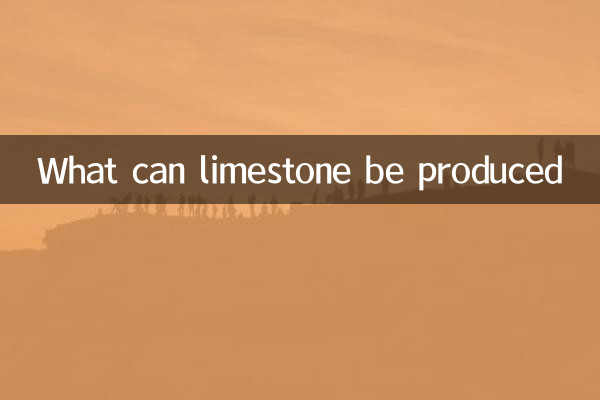What can limestone be produced
Limestone is a common sedimentary rock, mainly composed of calcium carbonate (CaCO₃), and is widely used in industries, construction, agriculture and other fields. In recent years, with the popularization of environmental protection and sustainable development concepts, limestone utilization methods have also been constantly innovating. The following are the main uses of limestone and its related data.
1. The main uses of limestone

| Use classification | Specific application | Related data |
|---|---|---|
| Building materials | Cement, concrete, stone | About 60% of global cement production use limestone as raw material |
| Environmental protection field | Flue gas desulfurization, sewage treatment | Each ton of coal-fired power generation requires consumption of 0.5-1 ton of limestone for desulfurization |
| Agricultural uses | Soil improvement, fertilizer additives | Global annual consumption of agricultural lime exceeds 100 million tons |
| Industrial raw materials | Glass manufacturing, papermaking, chemical engineering | Limestone accounts for about 10-15% of glass production |
2. Limestone production process
Limestone can produce quicklime (CaO) and carbon dioxide (CO₂) through high temperature calcination. Quicklime can be further processed to make mature lime (Ca(OH)₂). The following are the main production processes of limestone:
| Craft Name | Chemical reactions | Temperature requirements |
|---|---|---|
| Calcination | CaCO₃ → CaO + CO₂ | 900-1200°C |
| Hydration | CaO + H₂O → Ca(OH)₂ | Normal temperature |
3. Market trends of limestone
In recent years, the demand for limestone has continued to grow, especially in the environmental protection and construction sectors. The following are the hot content related to limestone among popular topics across the Internet in the past 10 days:
| Hot Topics | Main content | Attention |
|---|---|---|
| Carbon neutrality and limestone | Application of limestone in carbon capture and storage (CCS) technology | high |
| Green Building | The potential of limestone as a low-carbon building material | middle |
| Sustainable agricultural development | Effects of limestone to improve acidic soil | middle |
4. The future development direction of limestone
With the advancement of technology, the use of limestone will be more diverse and efficient. The following are possible future development directions:
1.Carbon capture technology: Limestone has great potential in capturing carbon dioxide and may play an important role in carbon emission reduction in the future.
2.High value-added products: Through deep processing, limestone can produce high-value-added products such as nano calcium carbonate for use in high-end manufacturing.
3.Circular economy: The recycling of limestone waste will become a trend, such as the reuse of building materials and agriculture.
In summary, limestone is a multifunctional basic material with a wide range of applications and great potential. In the future, with the increase in demand for environmental protection and sustainable development, the value of limestone will be further highlighted.